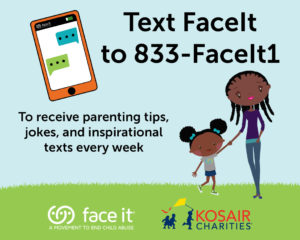
15 Nov The Art of Teaching Consent
 The impending holiday season is always a much-anticipated time for kids and families, and especially so this year as many families are finally able to share the holidays with one another again following the pandemic and social distancing. These family gatherings are also an opportunity to model and teach the importance of body consent to your kids of all ages.
The impending holiday season is always a much-anticipated time for kids and families, and especially so this year as many families are finally able to share the holidays with one another again following the pandemic and social distancing. These family gatherings are also an opportunity to model and teach the importance of body consent to your kids of all ages.
Many holiday rituals are important, memorable, and even sacred when it comes to family time. However, one that has aged like a glass of milk on a hot Kentucky day is the mandatory hug-and-kiss ritual. You may remember as a kid when your parents told you to give Auntie, Uncle, Grandma, Grandpa [insert family member] a hug and kiss at the end of the holiday visit. And you felt compelled to comply despite the fact that you may not have known them well or you just weren’t comfortable with another person in your space. While the intentions of that age-old ritual are innocent enough, what we are telling our small kids by forcing them to pass out hugs and kisses is that their body is not their own.
We often think of consent as a topic for the teenage years, but experts now agree that body autonomy and consent can (and should!) be taught and modeled to kids as young as 1-2 years old. Body autonomy is the idea that your body belongs to you and you are in charge of it, an empowering message that helps children protect themselves from unwanted touch at any age.
Here are few tips to teach body consent to toddlers and young kids:
- Give them options. Instead of telling kids to “Give Auntie a hug!” we should ask them if they would like to give them a hug. We could even give them options: “Would you like to give Auntie a high five, fist bump, or hug?”
- Demonstrate that their “no” matters. If and when your child says no to a hug, high five, or fist bump, listen to them. You can also teach them that their no means no by stopping tickling them or throwing them in the air when they say no. Say, “I heard you say no when I was tickling you, so I stopped. You can always say no when someone is touching you and that means they need to stop.”
- Avoid shaming or scolding them when they say no. Empower your kids by responding to their no with respect and empathy. Say, “If you don’t want to give Auntie a hug right now, that is okay. You never have to hug anyone you don’t want to. Would you like to wave or say bye to Auntie instead?”
- Teach them what to do if someone does not respect their no. When they are old enough to understand, have conversations with them around what to do if someone does not respect their wishes. You can say, “If you ever tell someone that you don’t want to be touched and they don’t listen to you, come and tell me.”
- Be prepared to defend your kids’ choices. This stance may not be the most popular with Auntie, who just wants a warm bear hug from your little one. Be prepared to speak up by saying, “He may need to warm up for a bit. Let’s save the hugs and kisses for later.”
- Teach your young kids that they must also seek consent from others. When kids are excited to see their friends, they may run up to them and immediately go in for a big hug. This is a great time to say, “Remember that you need to ask her if it’s okay to hug her first.”
This holiday season (and the seasons that follow) remember that it’s never too early to instill the important concept of consent and body autonomy to your kids! Check out our body safety resource for talking to your kiddos about their bodies and personal boundaries.
Blog by: Carli Mosby-Smith, Kentucky Youth Advocates, Image courtesy of Any Lane, Pexel.com




